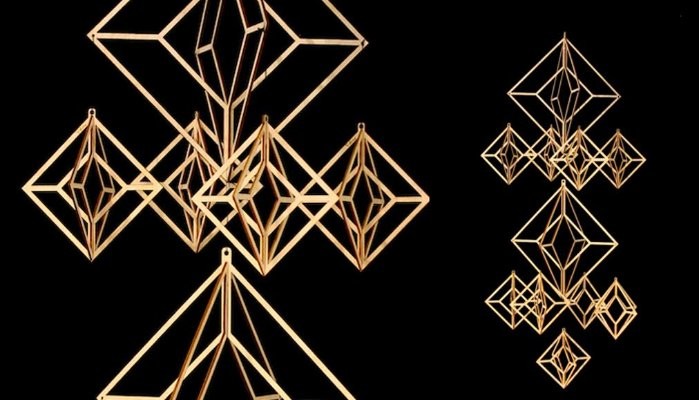
The evolution of himmeli – How a traditional Christmas ornament became a design artifact
For those of you who have absolutely no idea what “himmeli” is, a small introduction will be in order. For the impatient ones, there is also a picture included supposedly worth a thousand words (exceeding the article most likely). Himmeli is a traditional Finnish Christmas ornament which was usually made from straws. It is a geometric mobile to be hang on a Christmas tree or why not somewhere else in the house. It was made of straws as the light made the himmeli shine like it was made of gold, bringing luxury and bling to otherwise simple Christmas decorations. The word himmeli is believed to originate from the German word himmel meaning the heaven or the sky and in Swedish it is sometimes called halm krona or oro.
Photo by Maija Saukko instagram: @maya_sa_
So how did a traditional Christmas décor find its way to modern homes, into the hands of bloggers and even in Pinterest? There are even two books written about it by a Finnish himmeli enthusiast Eija Koski. Not very common for folklore seasonal item I would say. Yet the book is published even in Japanese. While some patient individuals are still making himmeli’s from traditional straw, today’s himmeli décor´s are often made of multicolored plastic straws, which are more durable and easier to handle. Many seem to find the geometrical minimalistic style of himmeli very fitting to modern interior design among other Nordic design artifacts. Even though the traditional himmeli shape is an octahedron, the mobile of consisting of these octahedron’s can be made in variety of shapes making himmeli recognizable yet protean. The shape of himmeli has even found its way in to fabrics and jewellery.
Elina Mäntylä, the CEO of onaValona design, decided to create her own version of himmeli from birch wood using laser cut technology. She had started making chandeliers from metal wire and crystals but wanted to find a more Finnish material to work with. Later on that design process resulted into making himmeli’s as she wanted to create a more traditional looking himmeli but of more long-lasting yet ecological material. She even made himmeli earrings which brought her first price in national design competition Folkista poppia in 2014 organized by Taito. Valona’s himmeli décor´s are more lasting than the traditional ones, yet ecological as they are made from wood instead of straws or plastic straws. Thanks to the design, Valona’s himmeli is also a lot easier to store as the parts can be fitted into a relatively small box, later to be taken out and put together very easily. Something that even a person like me with no artistic ability or craft skills can do. And I didn’t even have to read the manual.
Photo by Samuli Sivonen. Copyright Valona.
Himmeli’s success in the social media came like any other phenomena in social media, as a title wave. Someone created a trend and the others followed. Due to the minimalistic, timeless Nordic design, himmeli has settled its way into interior décor and there are many different versions of it available nowadays. For those with craft skills there are links provided below for instructions on how to make a himmeli yourself. For people like me, whose skills are otherwise concentrated and patience nonexistent there are luckily options like Valona design, to keep our interior design up to date.
Maria Korpiniemi
Follow Valona on LinkedIn!
Check out directions on himmeli making from these links:
http://www.vintagerevivals.com/2013/12/how-to-make-a-basic-geometric-himmeli-ornament.html
https://www.youtube.com/watch?v=tB-OZ1lLmBM
https://www.youtube.com/watch?v=eLhNJVBLHm4
For others:

